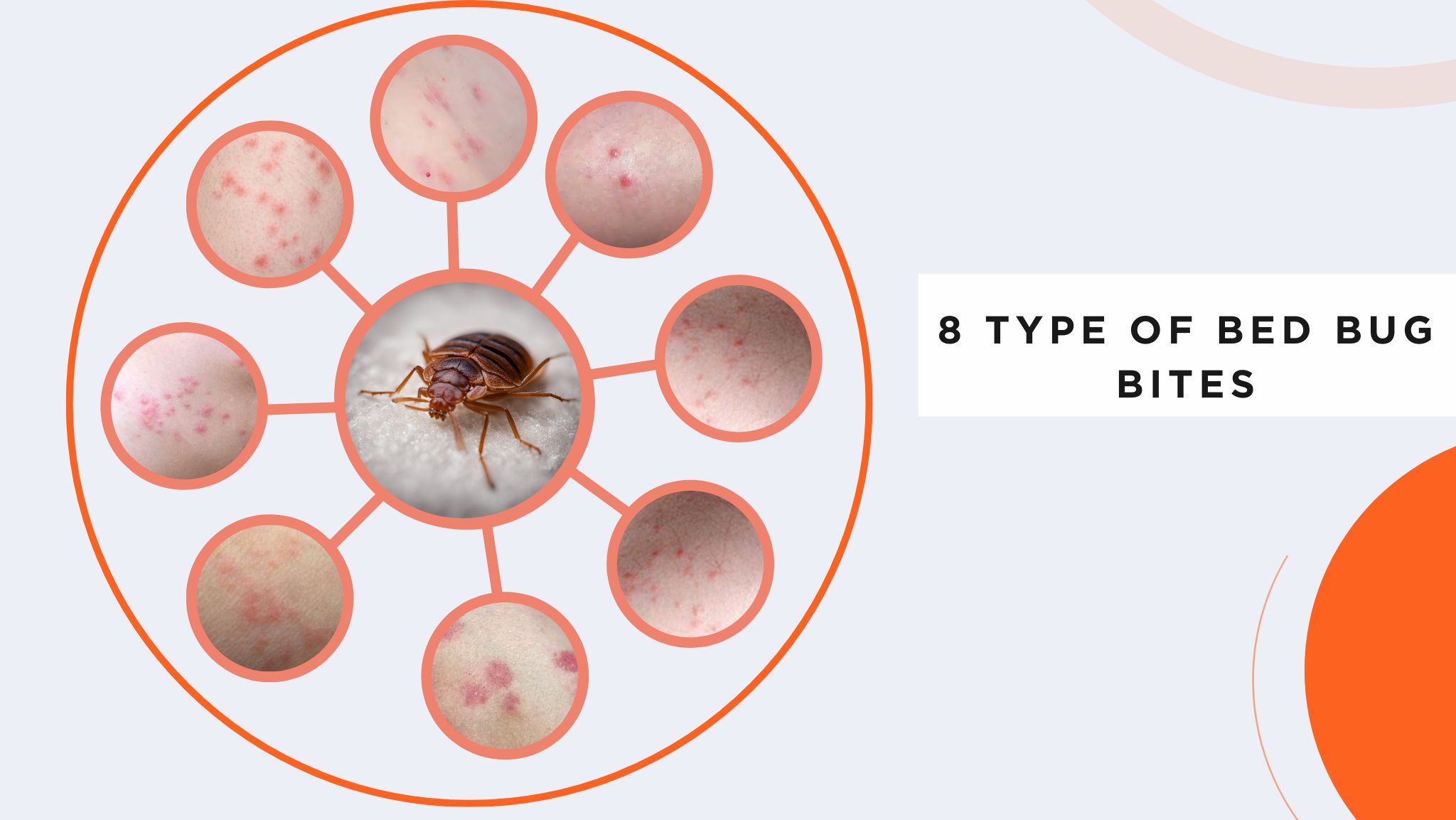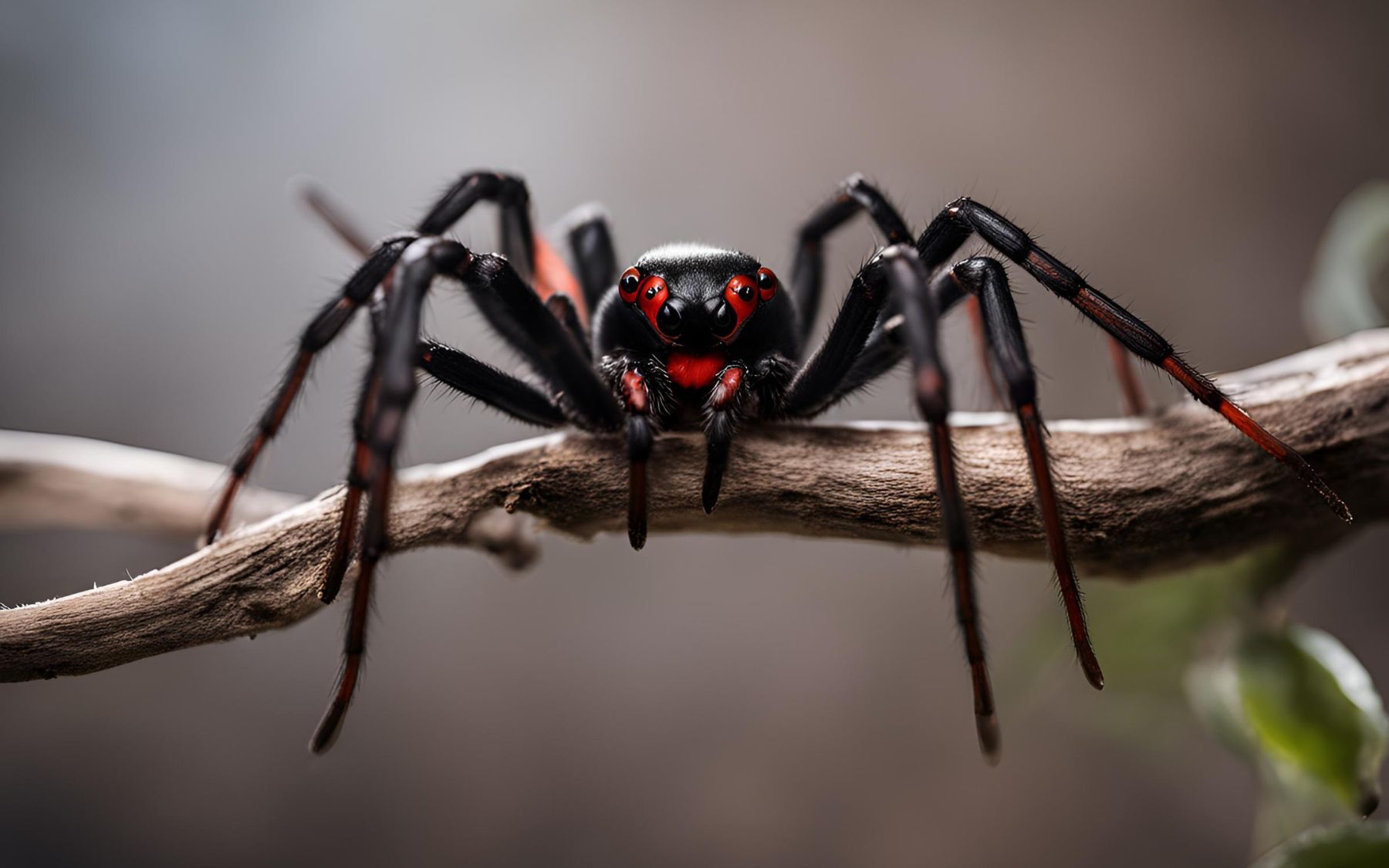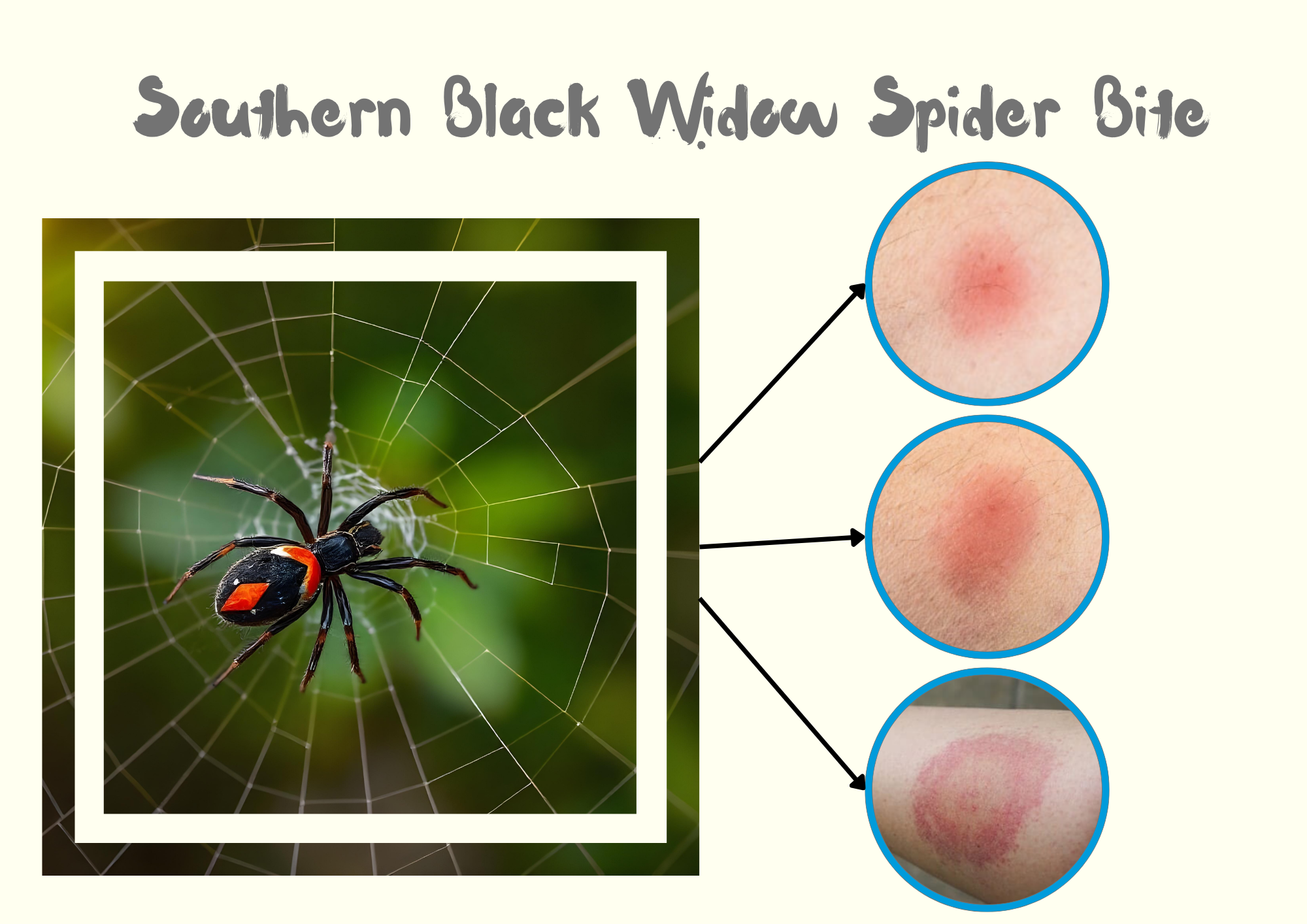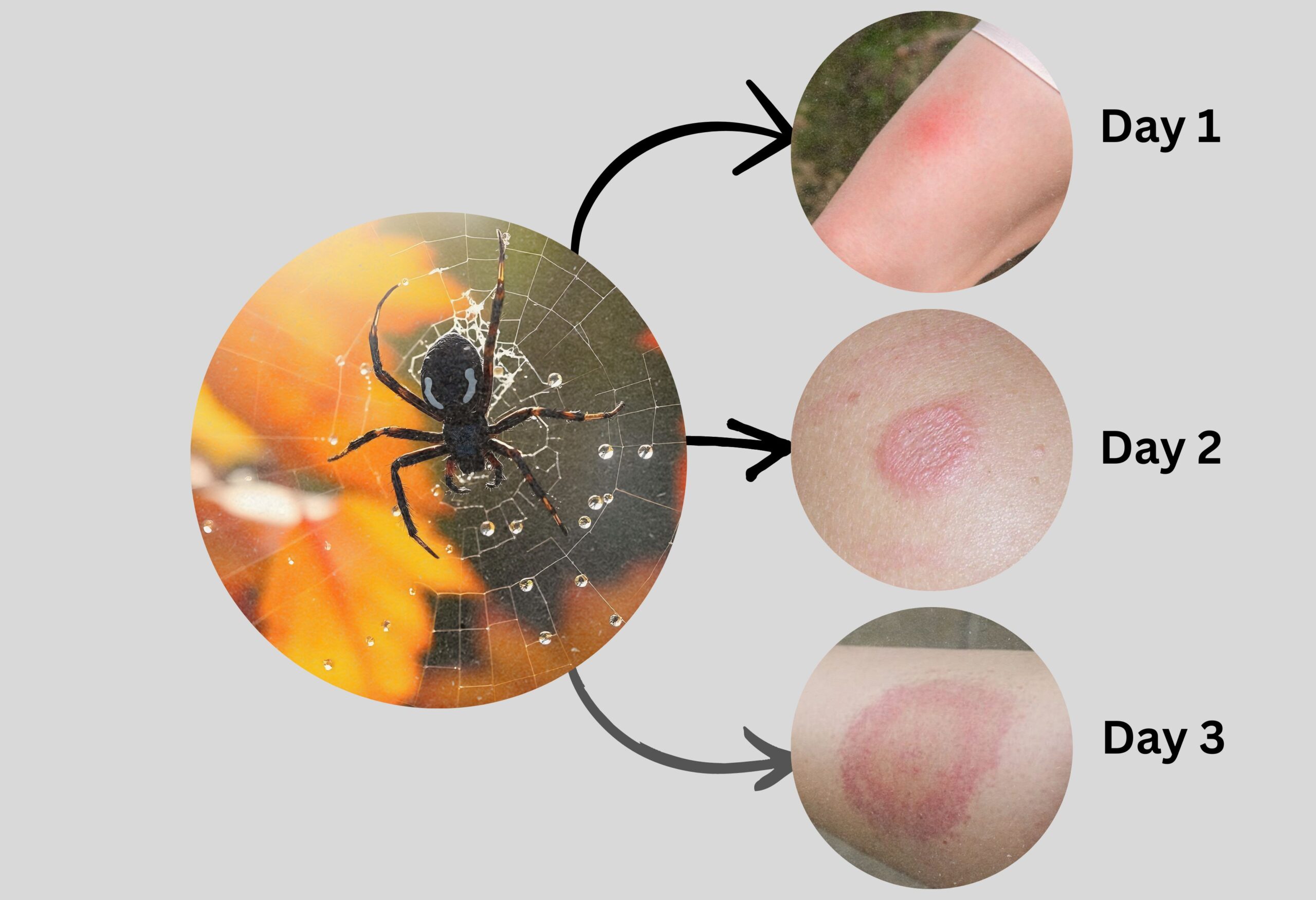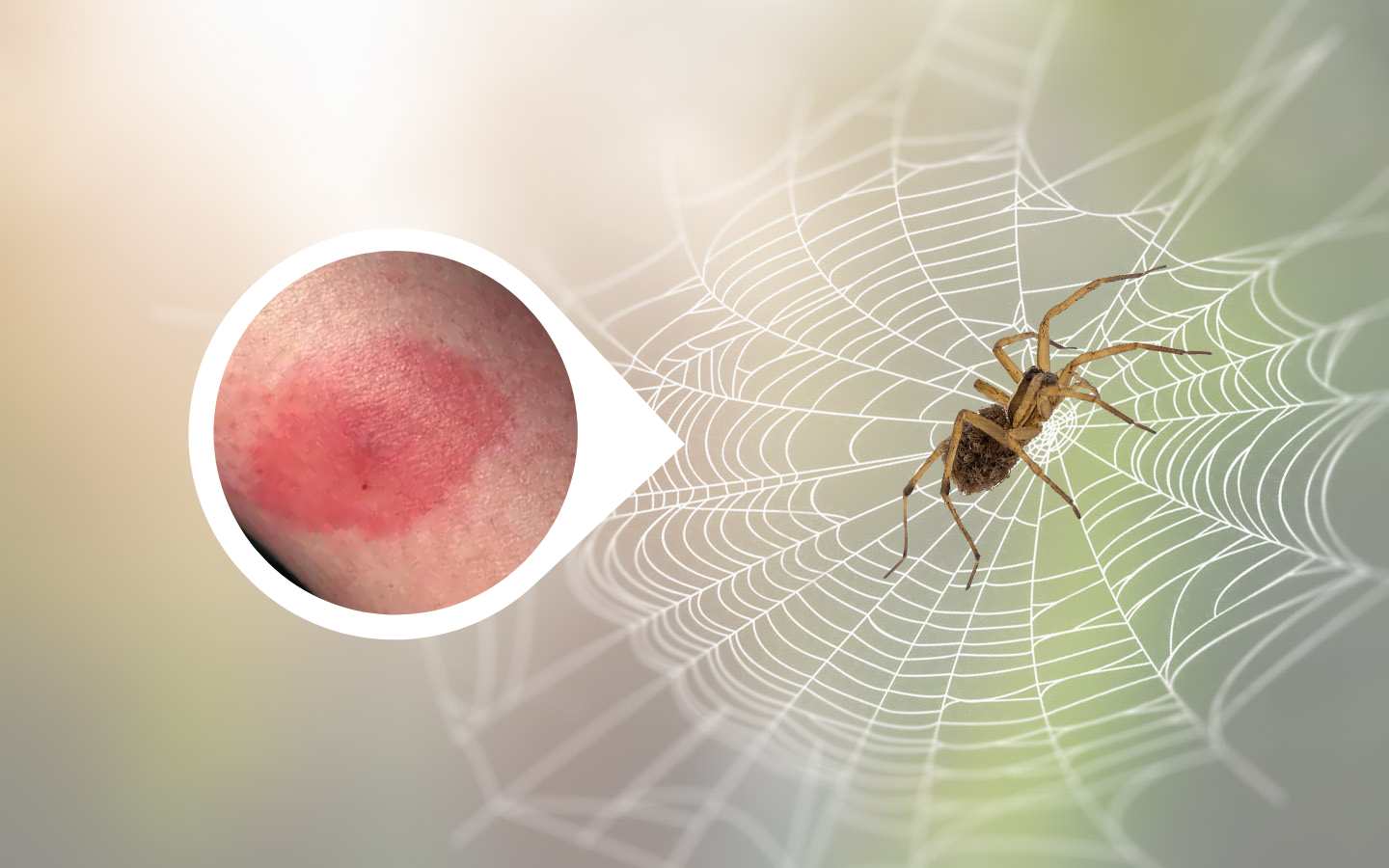Bed bugs are small, parasitic insects that feed on human blood, often causing discomfort, itching, and allergic reactions. These pests are found worldwide, but their types and characteristics can vary depending on the region. Understanding the different types of bed bugs and their bite symptoms is crucial for proper identification and effective treatment.
In this article, we highlight eight distinct types of bed bugs, including their bite symptoms, identification features, and treatment options. By recognizing these symptoms and knowing how to distinguish between different species, you can better manage infestations and minimize the impact of these unwelcome intruders.
8 Type Of Bed Bug
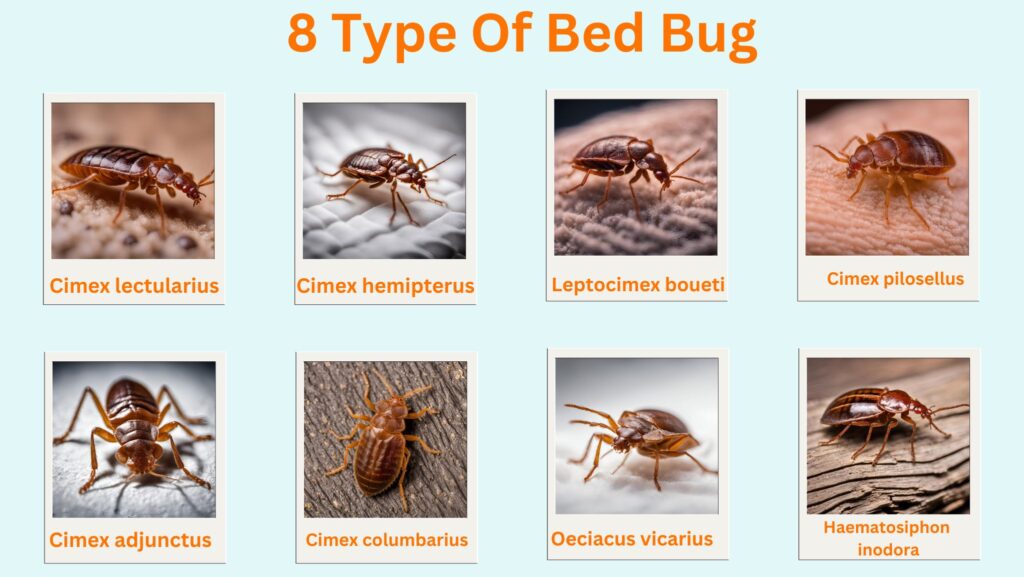
Here are eight types of bed bugs: Their bite symptom, identification, treatment, and more
- Cimex lectularius
- Cimex hemipterus
- Leptocimex boueti
- Cimex pilosellus
- Cimex adjunctus
- Cimex columbarius
- Oeciacus vicarius
- Haematosiphon inodora
Bug Bite Identification Chart with Pictures: A Quick Guide
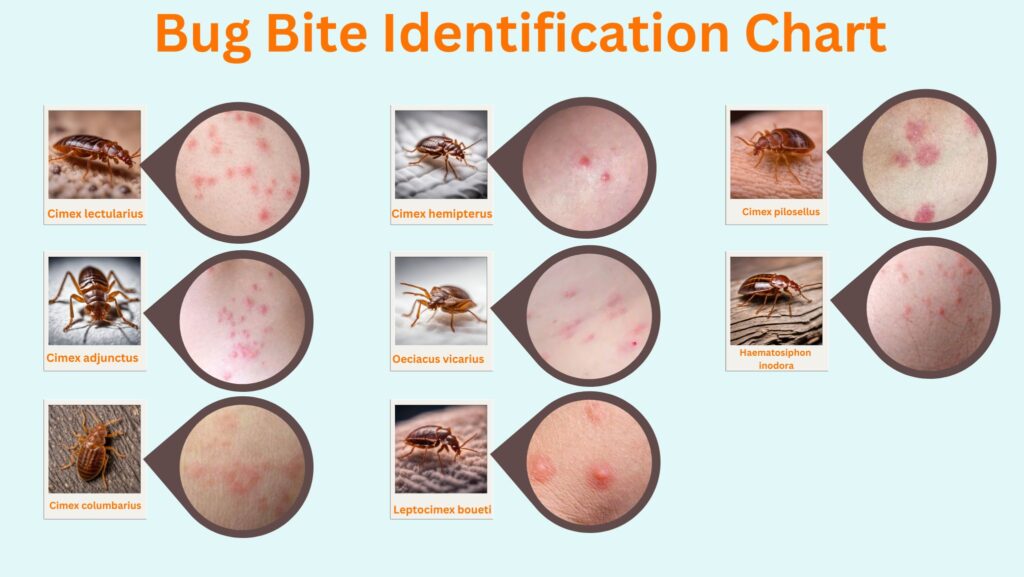
Bug bites can be confusing and alarming, especially when you’re unsure which bug is responsible. To help you identify what might have bitten you, we’ve created a bug bite identification chart with pictures. By examining these images, you can easily compare your bite with common bug bites and identify the culprit.
Each picture in the chart shows the typical appearance of bites from different bugs, along with key characteristics that distinguish them. If you wish to learn more about each bug bite, including symptoms, treatment options, and prevention tips, continue reading for detailed information. This guide will help you recognize the bite patterns, understand the potential risks, and know when to seek further medical advice. Identifying the right type of bite is the first step toward effective treatment and relief.
1. Cimex lectularius
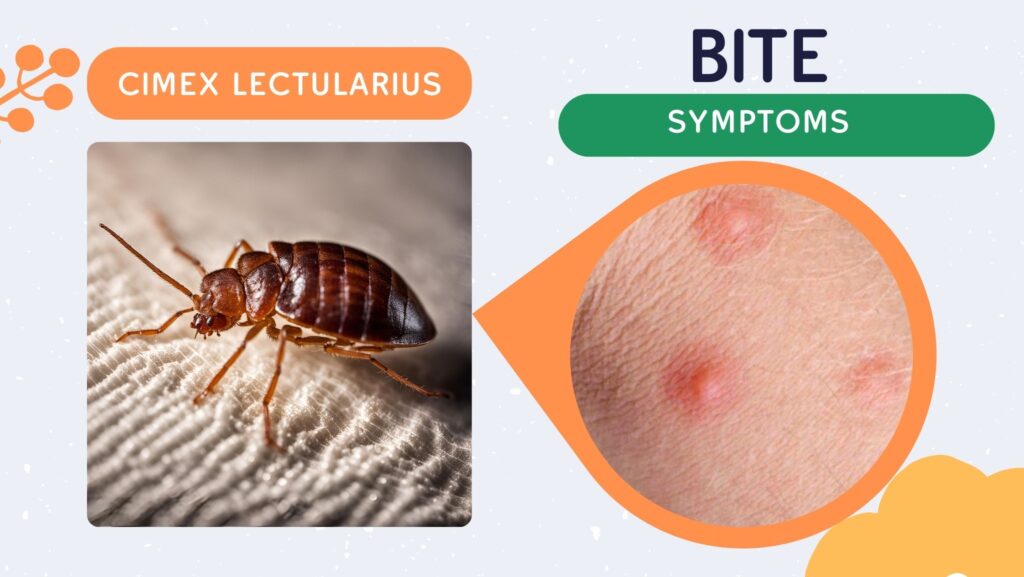
Cimex lectularius, also known as the common bed bug, is a small, reddish-brown insect about 4-5 mm in length. It is wingless and has a flat, oval shape. Preferring warm, dark environments close to its food source, which is human blood, this pest commonly infests homes, hotels, and hostels.
Bite Symptoms
- Initially painless, bed bug bites may become itchy and uncomfortable over time.
- Common symptoms include red, itchy welts, which often appear in a line or cluster.
- In some cases, swelling, blisters, or hives may develop.
- Symptoms might not appear immediately and can take several days to manifest.
Bite Identification
Bed bug bites are usually red and swollen, with a dark spot in the center. They often appear in clusters or lines, commonly referred to as the “breakfast, lunch, and dinner” pattern. Bites typically occur on exposed areas of the body such as the arms, legs, and torso. The pattern and location of the bites can help differentiate them from other insect bites.
Treatment
- Home Remedies: Wash the affected area with soap and water to reduce infection risk. Apply a cold compress to alleviate itching and swelling.
- Over-the-Counter Treatments: Use anti-itch creams or lotions containing hydrocortisone or calamine to manage itching and inflammation.
- Medical Treatment: For severe reactions or infections, consult a healthcare provider who may prescribe oral antihistamines or corticosteroids.
2. Cimex hemipterus
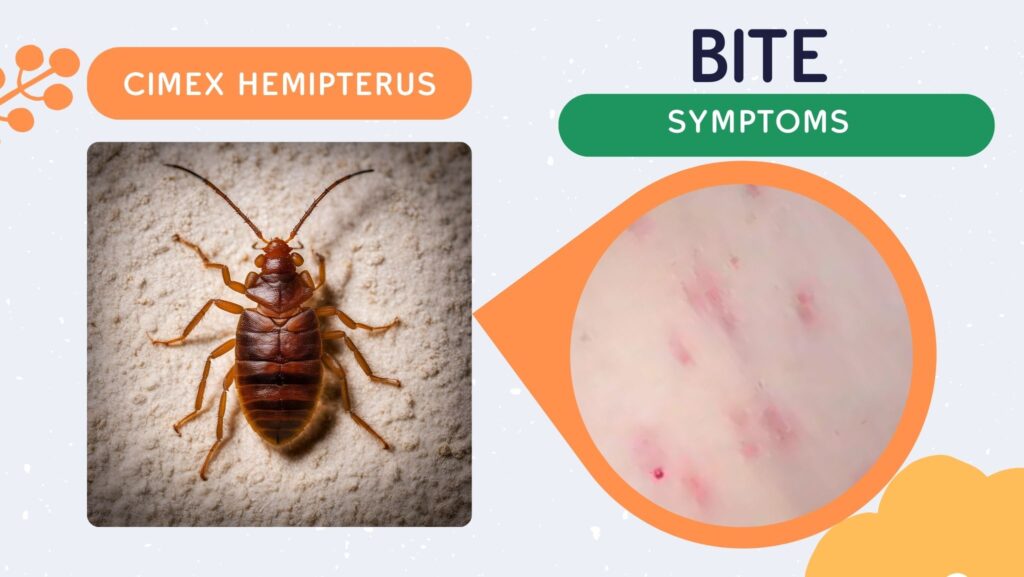
Cimex hemipterus, commonly known as the tropical bed bug, is similar in appearance to Cimex lectularius but is adapted to warmer climates. It is a small, reddish-brown insect with a flat, oval shape, measuring about 4-5 mm in length. These bed bugs are typically found in tropical and subtropical regions and prefer environments close to their human hosts, such as in homes and hotels.
Bite Symptoms
- The initial bite is often painless but can develop into itchy, red welts.
- Symptoms usually include red, itchy bumps that may appear in a linear or clustered pattern.
- Swelling, blisters, or hives can occur in some individuals.
- The appearance of symptoms might be delayed by several days.
Bite Identification
Bites from Cimex hemipterus are characterized by red, swollen marks with a central dark spot. They often appear in a line or cluster, similar to other bed bug bites. Bites are typically found on exposed areas of the body such as the arms, legs, and torso. The pattern and location of the bites can help distinguish them from other insect bites.
Treatment
- Home Remedies: Clean the affected area with soap and water to prevent infection. Applying a cold compress can help reduce itching and swelling.
- Over-the-Counter Treatments: Anti-itch creams or lotions containing hydrocortisone or calamine are effective for managing symptoms.
- Medical Treatment: For severe reactions or infections, seek medical advice. A healthcare provider may prescribe oral antihistamines or corticosteroids.
3. Leptocimex boueti
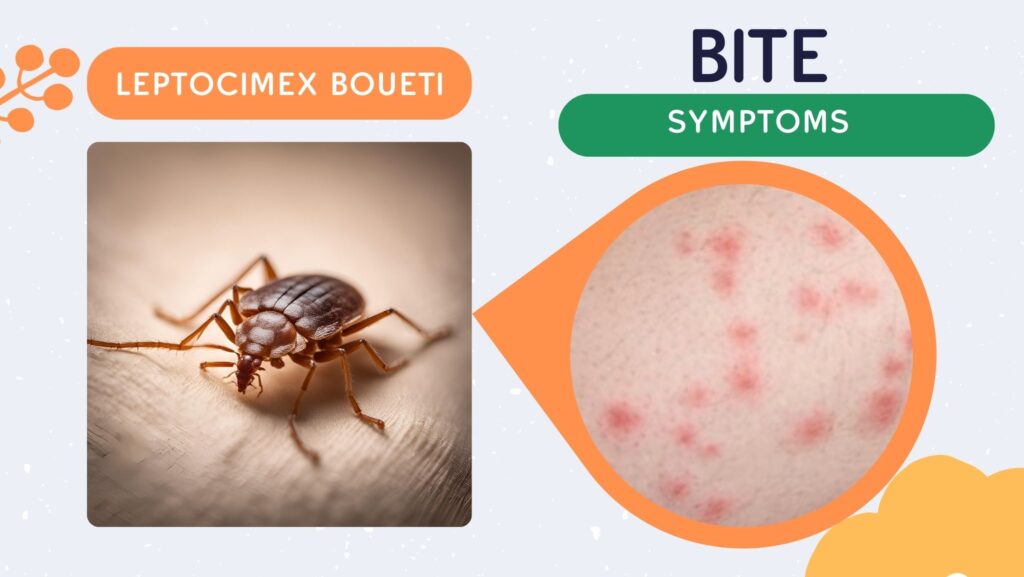
Leptocimex boueti is a less common bed bug species found in West Africa. It shares similarities with other bed bugs but is adapted to the local environment. This species is small, with an oval, flat body and a reddish-brown color, measuring about 4-5 mm in length. It infests areas close to human habitats, similar to other bed bugs.
Bite Symptoms
- Bites are often initially painless but can later cause itching and discomfort.
- Common symptoms include red, itchy welts that may appear individually or in clusters.
- Some individuals may experience swelling or blisters.
- Symptoms may not appear immediately and can take several days to show.
Bite Identification
Bites from Leptocimex boueti typically appear as red, swollen marks with a dark center. They often occur in clusters or lines and are found on exposed areas of the body such as the arms and legs. Identifying these bites involves noting the pattern and location, which can help distinguish them from bites by other insects.
Treatment
- Home Remedies: Wash the bitten area with soap and water to reduce infection risk. Applying a cold compress can help relieve itching and swelling.
- Over-the-Counter Treatments: Use anti-itch creams or lotions containing hydrocortisone or calamine to manage symptoms.
- Medical Treatment: For severe reactions or infections, consult a healthcare provider who may recommend oral antihistamines or corticosteroids.
4. Cimex pilosellus
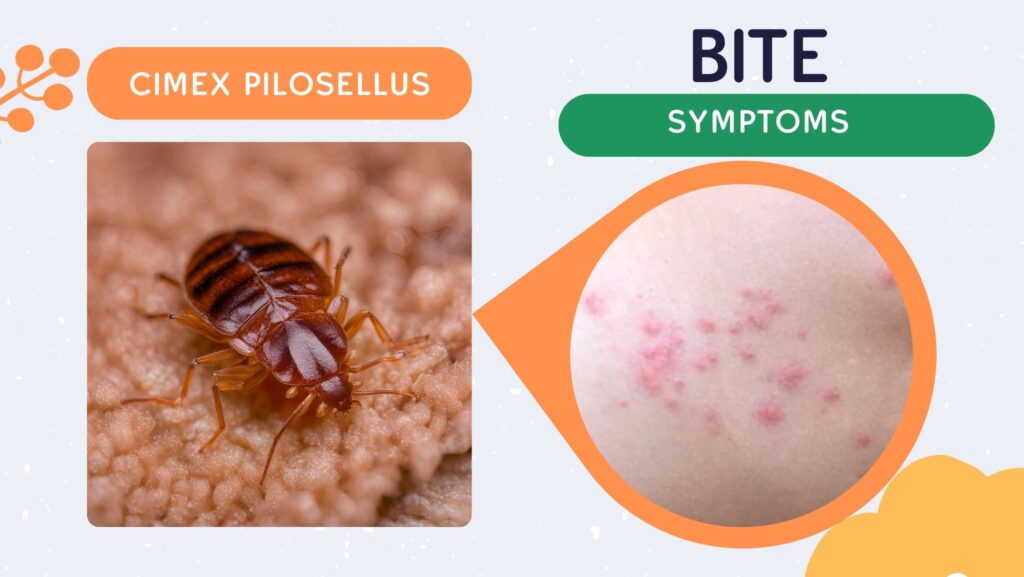
Cimex pilosellus is a lesser-known species of bed bug that is primarily found in the Middle East and parts of Asia. It is similar in appearance to other Cimex species, with a flat, oval body and a reddish-brown color. Adults are approximately 4-5 mm long. This species tends to infest areas close to its host, including human living spaces.
Bite Symptoms
- Bites may start off as painless but can quickly develop into itchy, red welts.
- Typical symptoms include red, swollen bumps that may appear in a line or cluster.
- Some people may experience additional reactions such as swelling or blistering.
- The onset of symptoms can be delayed by several days.
Bite Identification
Bites from Cimex pilosellus are usually red and swollen with a central dark spot. They often appear in clusters or lines on exposed areas of the body such as the arms, legs, and torso. The distinctive pattern of bites helps in distinguishing them from other insect bites.
Treatment
- Home Remedies: Clean the affected area with soap and water to minimize infection risk. Applying a cold compress can relieve itching and reduce swelling.
- Over-the-Counter Treatments: Anti-itch creams or lotions containing hydrocortisone or calamine are useful for managing symptoms.
- Medical Treatment: For severe reactions or infections, it is advisable to seek medical help. A healthcare provider might prescribe oral antihistamines or corticosteroids.
5. Cimex Adjunctus
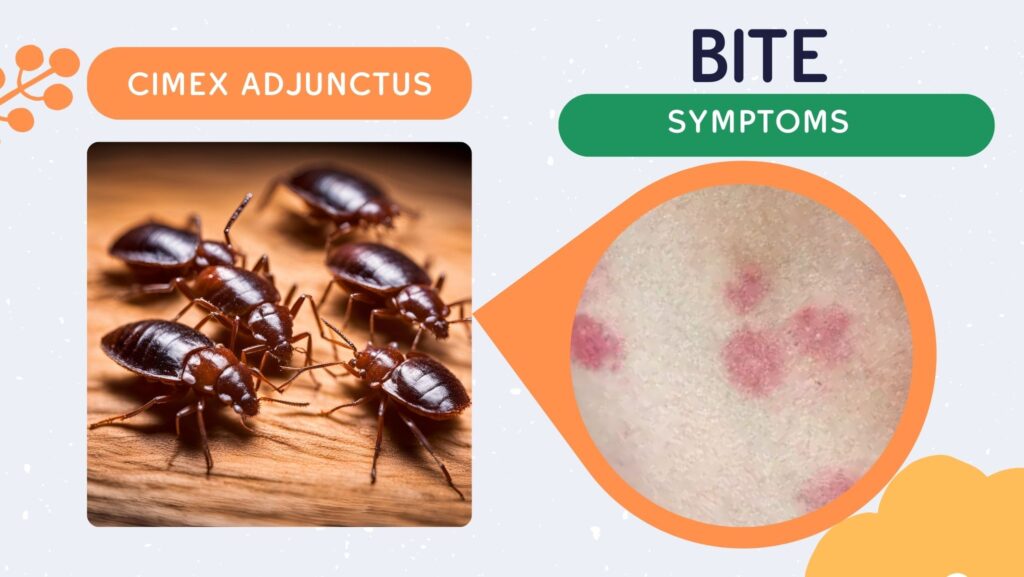
Cimex adjunctus is a less common species of bed bug found in the southeastern United States and parts of Central America. It shares many characteristics with other bed bugs, including a flat, oval body and a reddish-brown color. Adults are typically 4-5 mm in length. This species is adapted to living in close proximity to human hosts.
Bite Symptoms
- Bites from Cimex adjunctus may initially be painless but can develop into itchy, red welts.
- Symptoms often include red, itchy bumps that may appear in a linear or clustered pattern.
- Swelling, blisters, or hives can occur in some individuals.
- The appearance of symptoms can be delayed, sometimes taking several days.
Bite Identification
Bites from Cimex adjunctus are characterized by red, swollen marks with a central dark spot. They frequently appear in clusters or lines on exposed areas such as the arms, legs, and torso. Identifying the pattern and location of the bites can help differentiate them from bites by other insects.
Treatment
- Home Remedies: Wash the affected area with soap and water to prevent infection. Applying a cold compress can help ease itching and reduce swelling.
- Over-the-Counter Treatments: Anti-itch creams or lotions with hydrocortisone or calamine can be effective in managing symptoms.
- Medical Treatment: For severe reactions or infections, consulting a healthcare provider is recommended. They may prescribe oral antihistamines or corticosteroids for relief.
6. Cimex Columbarius
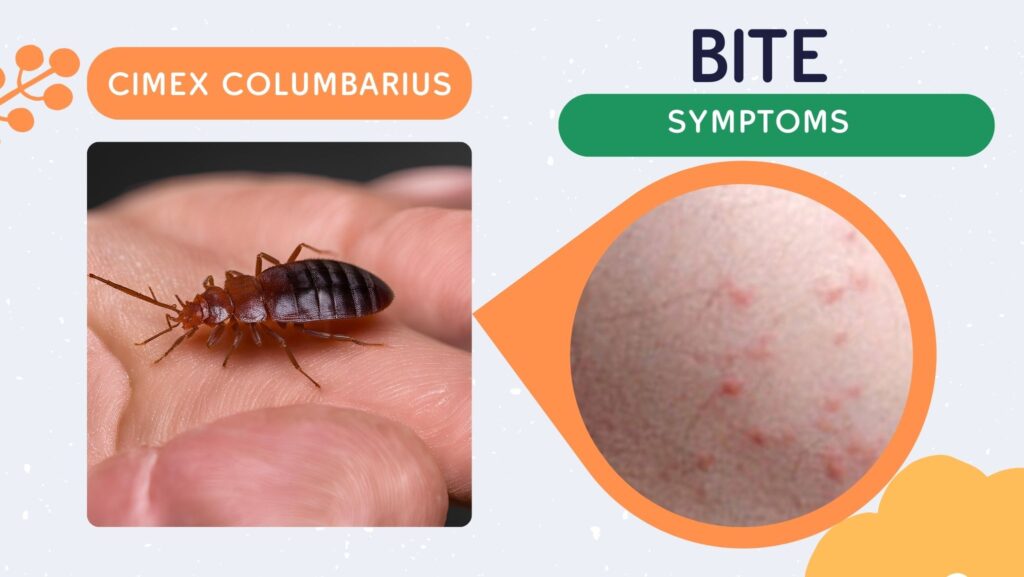
Cimex columbarius is a bed bug species that primarily inhabits areas in North America. It is closely related to other Cimex species and shares a similar appearance, with a small, flat, oval body that is reddish-brown. Adults are around 4-5 mm in length. This species is typically found in environments that are close to its human hosts, such as homes and hotels.
Bite Symptoms
- Bed bug bites from Cimex columbarius can start out as painless but later become itchy and uncomfortable.
- Common symptoms include red, itchy welts that often appear in a linear or clustered pattern.
- Some individuals may experience additional reactions such as swelling, blisters, or hives.
- The onset of symptoms may be delayed and can take several days to become noticeable.
Bite Identification
Bites from Cimex columbarius usually present as red, swollen bumps with a dark spot in the center. They are often found in clusters or lines on exposed areas of the body like the arms, legs, and torso. The pattern and location of the bites are helpful for distinguishing them from other insect bites.
Treatment
- Home Remedies: Clean the affected area with soap and water to minimize the risk of infection. Applying a cold compress can help relieve itching and reduce swelling.
- Over-the-Counter Treatments: Anti-itch creams or lotions containing hydrocortisone or calamine can be used to alleviate symptoms.
- Medical Treatment: For severe reactions or infections, seek medical advice. A healthcare provider may prescribe oral antihistamines or corticosteroids.
7. Oeciacus Vicarius
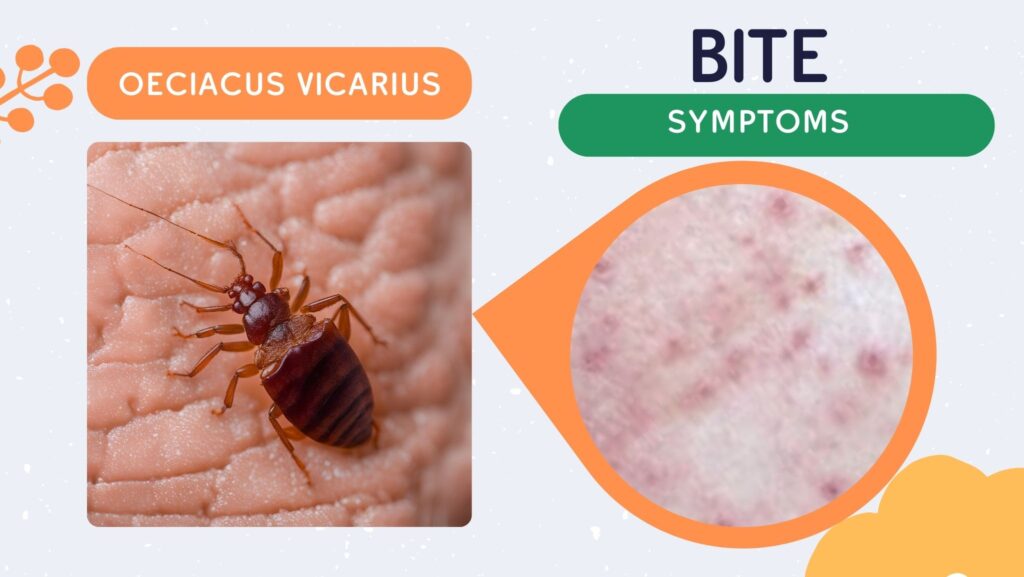
Oeciacus vicarius is a bed bug species found mainly in the western United States. It has a similar appearance to other Cimex species, with a flat, oval body that is reddish-brown. Adults are approximately 4-5 mm long. This species is adapted to living close to human habitats, such as in homes and other indoor spaces.
Bite Symptoms
- Bites from Oeciacus vicarius may initially be painless but can become itchy and cause discomfort over time.
- Symptoms often include red, itchy welts that can appear in clusters or lines.
- Some individuals may experience additional symptoms such as swelling, blisters, or hives.
- The development of symptoms may be delayed and can take several days to appear.
Bite Identification
Bites from Oeciacus vicarius are typically red and swollen, with a dark center. They often occur in clusters or rows on exposed body parts like the arms, legs, and torso. The distinctive pattern and location of the bites are key in identifying them compared to other insect bites.
Treatment
- Home Remedies: Wash the bitten area with soap and water to reduce infection risk. Applying a cold compress can help alleviate itching and swelling.
- Over-the-Counter Treatments: Anti-itch creams or lotions containing hydrocortisone or calamine can help manage symptoms.
- Medical Treatment: For severe reactions or infections, it is advisable to consult a healthcare provider who may prescribe oral antihistamines or corticosteroids.
8. Haematosiphon inodora
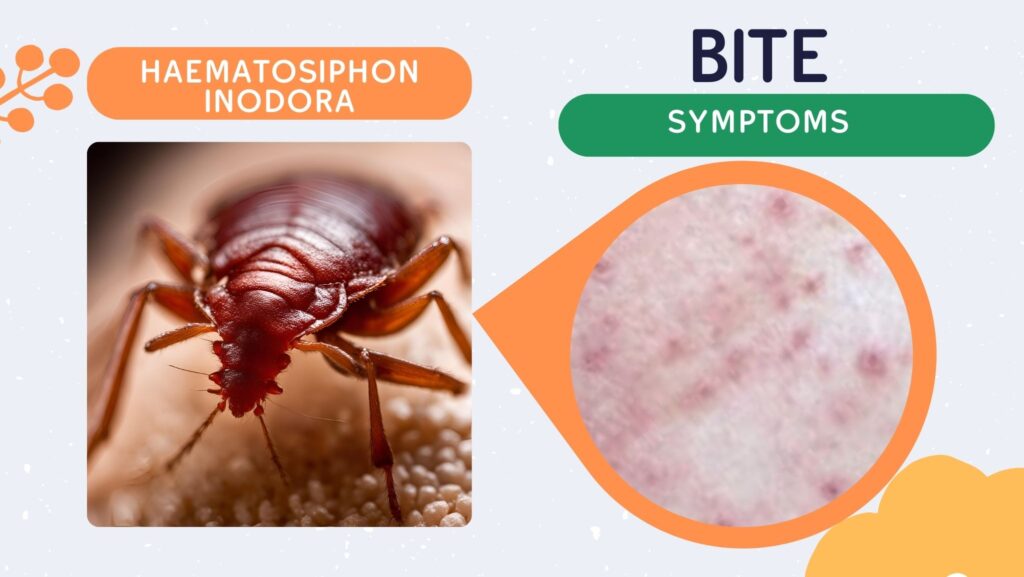
Haematosiphon inodora is a lesser-known species of bed bug found primarily in the southwestern United States and parts of Mexico. This species is similar in appearance to other bed bugs, with a small, flat, oval body that is reddish-brown. Adult bed bugs of this species measure approximately 4-5 mm in length. They prefer to reside in close proximity to their human hosts, such as in homes and hotels.
Bite Symptoms
- Bites from Haematosiphon inodora can initially be painless but may develop into itchy, uncomfortable welts.
- Common symptoms include red, itchy bumps that often appear in clusters or lines.
- Swelling, blisters, or hives may occur in some individuals.
- Symptoms might be delayed and can take several days to manifest.
Bite Identification
The bites are generally red and swollen with a central dark spot. They typically appear in clusters or lines on exposed areas such as the arms, legs, and torso. Identifying the pattern and location of the bites can help differentiate them from other insect bites.
Treatment
- Home Remedies: Wash the affected area with soap and water to prevent infection. Applying a cold compress can help with itching and swelling.
- Over-the-Counter Treatments: Anti-itch creams or lotions containing hydrocortisone or calamine can be used to manage symptoms.
- Medical Treatment: For severe reactions or infections, consulting a healthcare provider is recommended. They may prescribe oral antihistamines or corticosteroids for relief.
General Information on Bed Bug Bites
Common Symptoms of Bed Bug Bites
Bed bug bites often start as small, painless marks but can quickly become itchy and uncomfortable. Typical symptoms include red, swollen welts, which may appear in clusters or lines. Some individuals may experience additional reactions such as swelling, blisters, or hives.
How to Identify a Bed Bug Bite
Bed bug bites are usually red and swollen, often with a dark spot in the center. They tend to appear in a line or cluster on exposed areas of the body such as the arms, legs, and torso. The pattern of the bites is a key factor in distinguishing them from other insect bites.
Potential Complications if Untreated
If bed bug bites are left untreated, they can lead to secondary infections due to scratching. In some cases, individuals may experience severe allergic reactions or develop insomnia due to the discomfort and itching. Persistent infestations can also contribute to ongoing physical and mental stress.
Treatment and Prevention
Effective Treatments for Bed Bug Bites
Immediate treatment includes washing the affected area with soap and water to reduce infection risk. Applying a cold compress can help alleviate itching and swelling. Over-the-counter treatments such as anti-itch creams containing hydrocortisone or calamine are effective for symptom management. For severe reactions or infections, consult a healthcare provider who may prescribe oral antihistamines or corticosteroids.
Methods for Eliminating Bed Bugs from Your Home
Effective methods for eliminating bed bugs include:
- Professional Pest Control: Hiring a pest control professional for thorough inspection and treatment.
- Heat Treatment: Using high temperatures to kill bed bugs and their eggs.
- Chemical Treatments: Applying insecticides specifically designed for bed bugs.
- Sanitation: Regularly cleaning and vacuuming infested areas, and washing bedding and linens in hot water.
Tips for Preventing Bed Bug Infestations
- Regular Inspection: Check for signs of bed bugs in your home, particularly in bedding, furniture, and cracks.
- Protective Covers: Use bed bug-proof covers on mattresses and pillows.
- Reduce Clutter: Minimize clutter where bed bugs can hide.
- Travel Precautions: Inspect hotel rooms for signs of bed bugs and keep luggage off the floor.
FAQ about Bed Bug Bits:
Where Do Bed Bugs Bite?
Bed bugs typically bite exposed areas of the body such as the arms, legs, and torso. They often bite in clusters or lines.
Do Bed Bugs Bite Dogs?
Bed bugs primarily feed on human blood, but they can also bite pets like dogs if they are in close proximity.
Do Lady Bugs Bite?
Lady bugs can bite, but their bites are usually mild and not harmful to humans. They are more likely to pinch than to bite.
Do Water Bugs Bite?
Water bugs, such as cockroaches, do not bite humans. However, some aquatic bugs, like water boatmen, can bite but are generally not harmful.
Can Bed Bugs Bite Through Clothes?
Bed bugs cannot bite through clothes. They need direct contact with the skin to feed.
Can Stink Bugs Bite?
Stink bugs do not bite. They are known for their foul odor and do not pose a threat to humans through biting.
Tiny Black Bugs That Bite
Tiny black bugs that bite could be fleas, mites, or certain types of gnats. Proper identification is necessary to address the infestation effectively.
Conclusion
Understanding the various species of bed bugs, their bite symptoms, and effective treatments is crucial for managing and preventing infestations. Bed bug bites typically cause red, itchy welts and can lead to complications if untreated.

